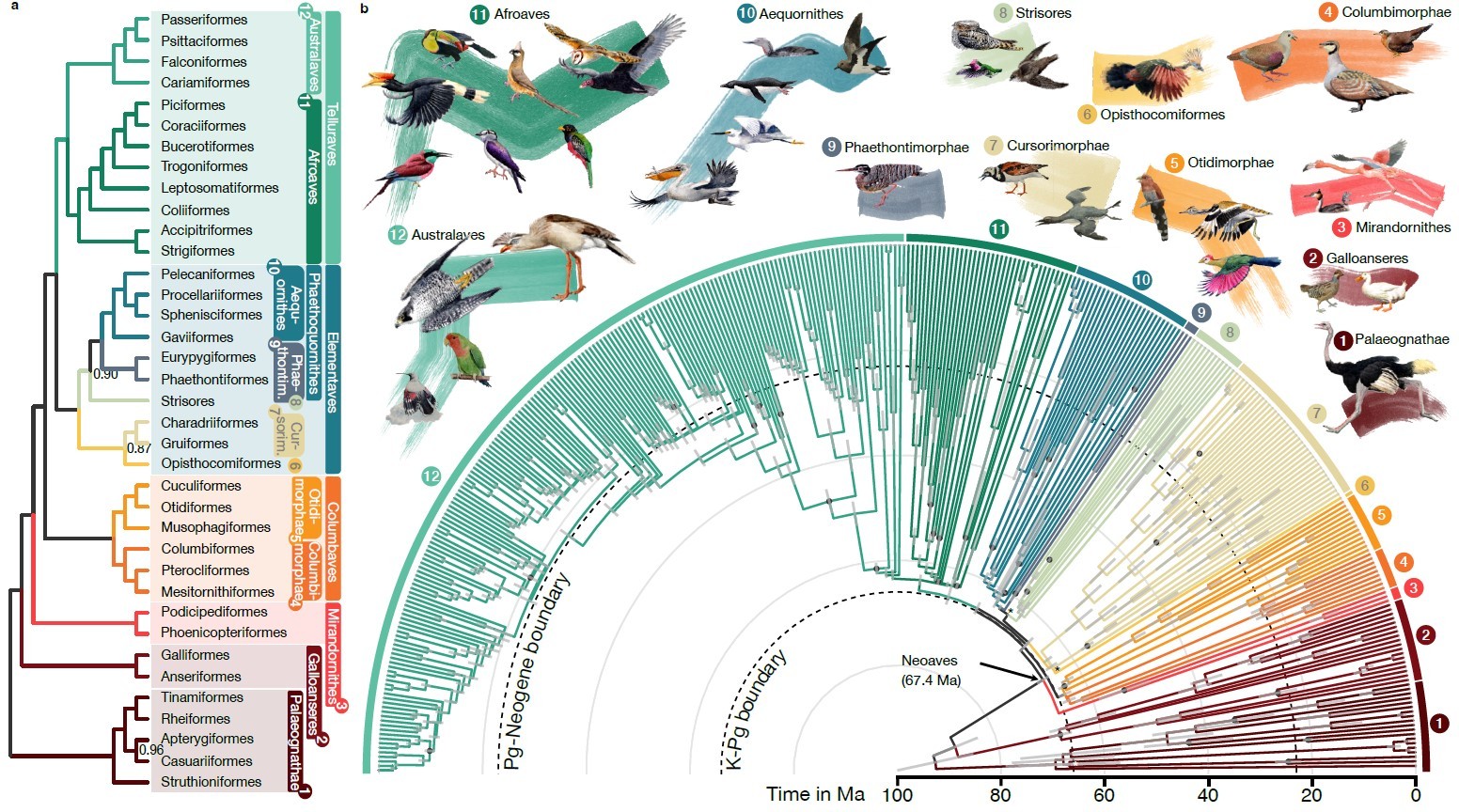Most accurate avian phylogeny to date shows that the brain size of birds increased during evolution
The brains of birds have grown larger relative to their body size as a result of evolutionary changes over the last 70 million years, according to research by an international team of scientists who published the most comprehensive and detailed family tree of bird species in the journal Nature. Two Hungarian evolutionary biologists, Tamás Székely (HUN-REN‒UD Evolution of Reproductive Strategies Research Group) and András Liker (HUN-REN‒PE Evolutionary Ecology Research Group), were involved in the research.
The study explores the evolution of the birds from the first early birds that lived during the dinosaur era to modern species. The phylogenetic tree was produced by collecting whole-genome sequences from 363 bird species, representing 218 taxonomic families (92% of all bird families). The genome data were analysed in combination with anatomical characteristics, such as body and brain size, that are associated with behavioural and ecological traits.
The research is part of the Bird 10,000 Genomes (B10K) project, one of the largest genome sequencing projects in the world, involving 49 institutions from 13 countries and the 52 co-authors of the paper. The project has been led by Josefin Stiller (University of Copenhagen, Denmark), Siavash Mirarab (University of California, USA) and Guojie Zhang (Zhejiang University, China).
The research team found that the phylogeny reconstructed from genome data is broadly consistent with previously proposed avian phylogenetic trees but also revealed new details of bird evolution. A time calibration of the phylogeny using fossils shows that the number of bird species exploded after the mass extinction event that killed the dinosaurs 66 million years ago. The main driving force behind the emergence of a large number of new bird clades at this time was the opportunities to fill the empty ecological niches created after most life on the Earth was wiped out.

Relationships and divergence times for 363 bird species. (a) Topology simplified to orders. (b) Time tree of all species. Source: Stiller et al. 2024 Nature
The research also showed that the body size of bird species decreased over time, but there was a rapid increase in brain size that continues to the present day. Professor Tamás Székely, co-author of the study, said: "The average body size of birds has decreased during evolutionary changes, but their brain mass relative to body mass has increased, indicating the evolution of cognitive abilities. Birds have probably evolved to be more intelligent." The other Hungarian participant in the study, Professor András Liker, added that large brain size may be linked to the evolution of complex social behaviour, stunning variation in bird song, and sophisticated tool use in some species.
The researchers also looked at the impact of different genome sampling methods on the accuracy of the phylogenetic tree. By analysing 150,000 genomic regions, they showed that sampling both large amounts of genetic sequence and covering a large part of taxonomic diversity is important for accurately mapping the evolutionary history of the roughly 10,000 bird species alive today. First author of the study, Professor Josefin Stiller, said: "We found that various parts of the genome, for example, individual chromosomes or protein-coding genes, often support vastly different trees. This likely explains why studies that only analysed certain genomic parts were in conflict."
According to project leader Professor Guojie Zhang, the newly completed family tree based on the most comprehensive genetic data ever used allowed a more accurate and reliable placement of many bird groups that had uncertain positions on the phylogenetic tree. This phylogeny will provide a solid backbone for future studies of the evolutionary history of all extant bird species and will be an important tool for ornithological and biodiversity research.
Publication:
Stiller, J., Feng, S., Chowdhury, AA. et al. Complexity of avian evolution revealed by family-level genomes. Nature (2024). DOI: 10.1038/s41586-024-07323-1.

